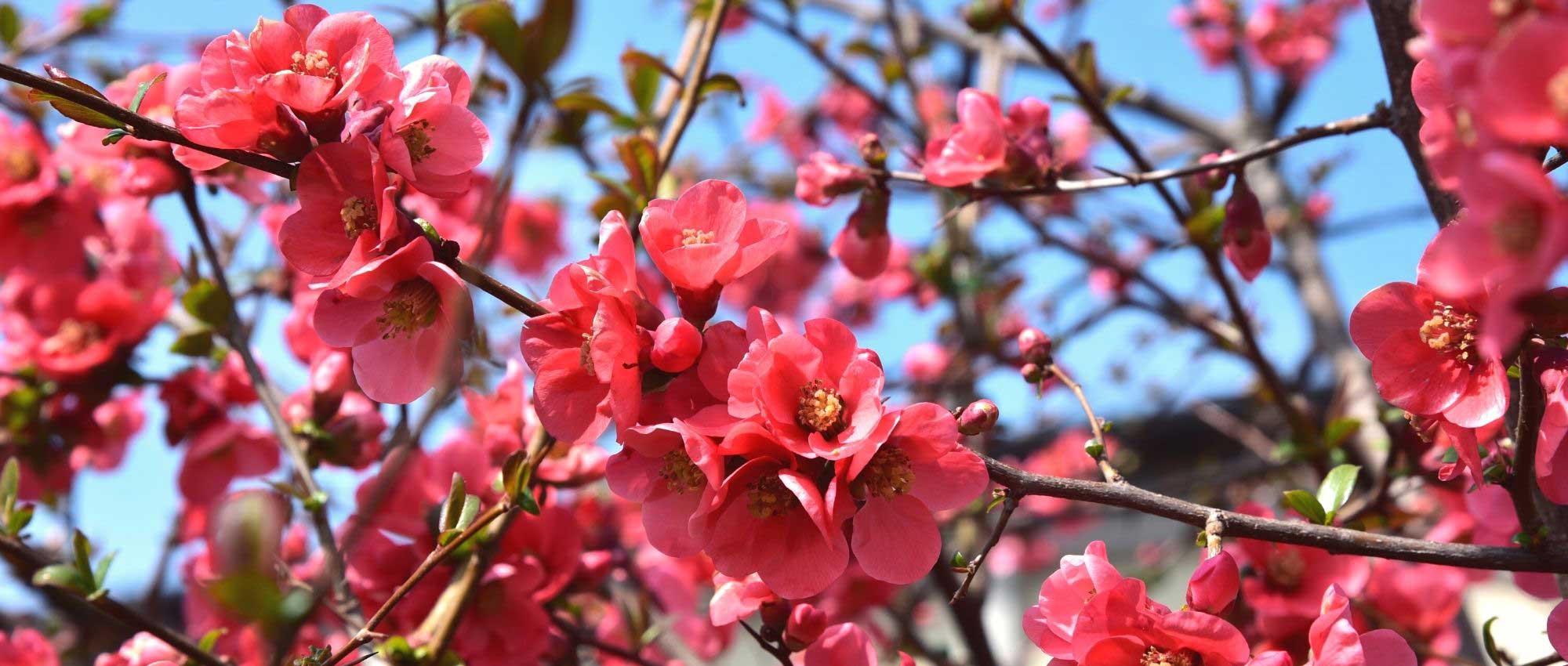
10 bushes with early spring flowering
Enjoy it from late winter!
Contents
As soon as winter draws to a close and temperatures begin to soften, around March–April, some bushes begin to flower. They herald the return of fine weather! Sometimes their flowers appear before leaves, on naked twigs, making the flowering truly striking! We recommend pairing them with other early-spring flowers, such as spring bulbs (tulips, hyacinths, daffodils…) and perennials that flower early: oriental hellebores, lungworts, primroses, pasque anemone. Découvrez nos fiches 10 perennials with early-spring flowering and 6 bushes with late-spring flowering. Don’t hesitate to plant these bushes together, for example to create an informal hedge in flower from early spring.
Forsythia
Forsythia blooms from late winter, from March, and is then covered with a profusion of golden-yellow flowers, which appear before leaves. It is one of the earliest bushes to flower in early spring! It is a dense, bushy bush that grows fairly quickly. There are many varieties: some are dwarf and do not exceed 1 m in height, while others reach 3 m or more for largest. Some also stand out for their variegated foliage (Forsythia intermedia ‘Golden Times’). Forsythia is ideal in informal hedges or in mixed borders, but can also be planted in containers. It has deciduous foliage. It is a trouble-free bush, very easy to grow and perfectly hardy: down to −20 °C. In garden, it thrives in full sun or light shade, in any well-drained soil. It requires almost no maintenance and only needs pruning once every two to three years.
Also discover Abeliophyllum distichum, a bush very similar to Forsythia.
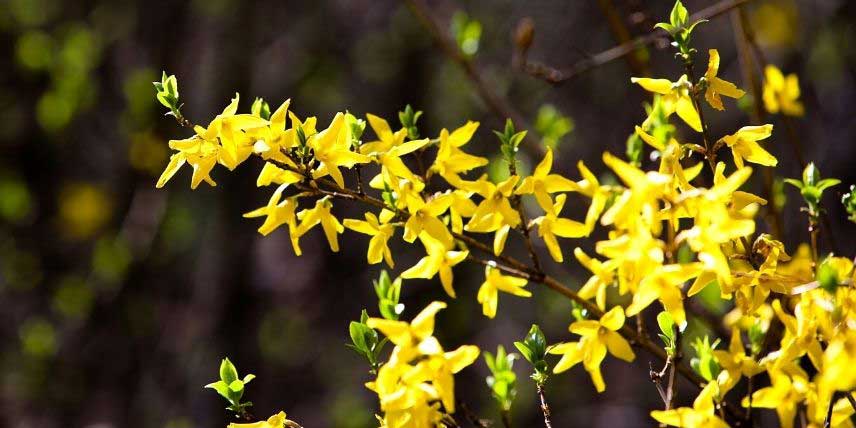
Forsythia offers a very bright flowering display!
Read also
Pruning spring-flowering bushesJapanese quince
Japanese quince, or Chaenomeles, is a bush that usually flowers in March–April, for 3 to 4 weeks. As it is a deciduous bush, flowers appear on still naked branches. Depending on variety, flowers can be red, pink, coral, orange or white… It is a bush with thorny branches. In autumn it produces edible, decorative fruits that resemble small apples. Its foliage also takes on beautiful autumn colours. Japanese quince is undemanding: it is quite hardy and copes well with pollution, cold and drought. It grows in sun or partial shade, in ordinary soil without excess moisture.
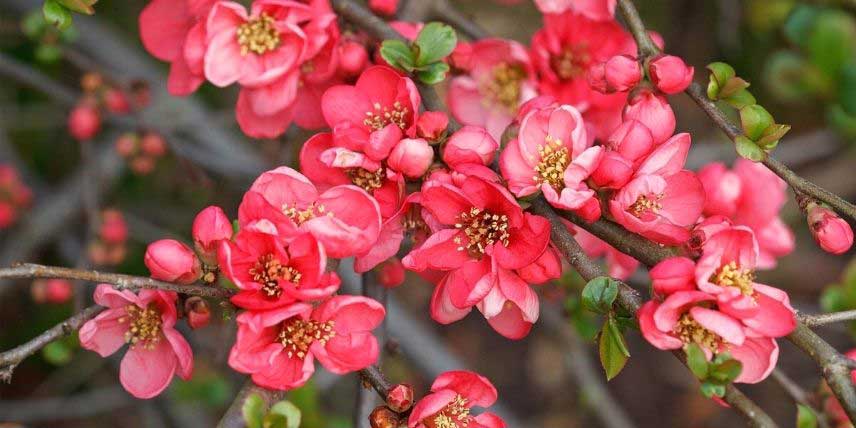
Flowers of Chaenomeles superba ‘Pink Lady’
→ Also discover our complete fact sheet on Japanese quince
Discover other Spring-flowering shrubs
View all →Available in 1 sizes
Available in 0 sizes
Available in 1 sizes
Available in 1 sizes
Available in 1 sizes
Available in 1 sizes
Available in 1 sizes
Available in 1 sizes
Available in 1 sizes
Available in 1 sizes
Spiraea thunbergii
Thunberg spirea, or Spiraea thunbergii, is a very beautiful bush whose arching branches are covered from late winter with a multitude of white flowers. It is one of the earliest spireas! Flowers, small but very numerous, have five petals and are distributed along the length of the branches. In variety ‘Fujino Pink’, flowers are pink in bud, then turn white as they open. Flowers of Thunberg spirea are followed by fruit enjoyed by birds. Its foliage turns orange in autumn in response to cold. This spirea grows fairly quickly and forms a fairly dense, compact bush, not exceeding 1.5 m in height.

Abundant white flowering of Thunberg spirea, Spiraea thunbergii (photo Tanaka Juuyoh)
→ Also discover our complete factsheet on Spireas
Read also
9 autumn-flowering shrubsJapanese Cherry Trees
Japanese Cherry Trees, or flowering cherries, are bushes that offer an incredible pink or white flowering in spring. Flowers can be single or double, depending on number of petals they have. Their very delicate, romantic flowering is much admired! It symbolises the transient character of beauty and life. Their decorative bark is also admired, as is their foliage, which takes on lovely autumnal colours. In Japan, their flowering is celebrated in a custom called Hanami: people gather in parks to picnic beneath these trees, known as Sakura.
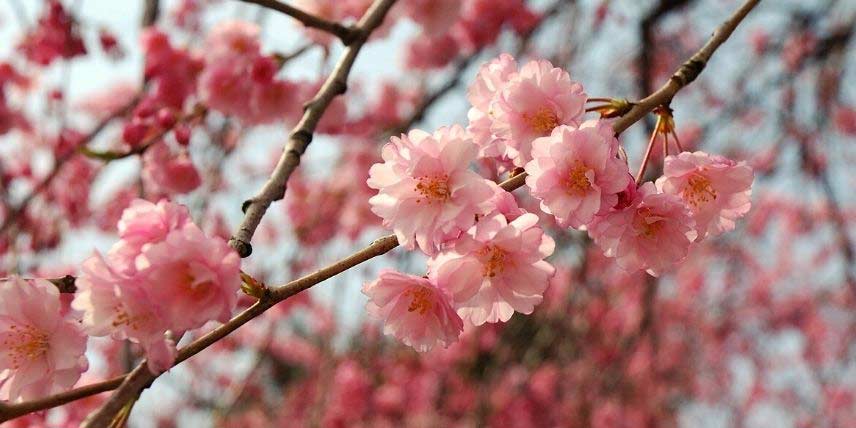
Very delicate flowering of a Prunus serrulata (photo Kropsoq)
→ Also discover our complete guide to Japanese Cherry Trees
Magnolias
Magnolias offer an impressive flowering, made up of large flowers with broad, thick petals. Their flowering is refined, very elegant. Some magnolias flower in summer, but for an early-spring flowering, we particularly recommend Magnolia stellata, which bears in March–April a multitude of star-shaped white flowers. They appear before the leaves, and are formed of fairly thin, spreading petals that open well. They are also fragrant. This bush is fairly compact, as it does not exceed 3 m in height. You can also choose the Magnolia soulangeana, which bears flowers with subtle shades of white, pink and purple. They have a tulip shape, with petals broader and more erect than those of Magnolia stellata.
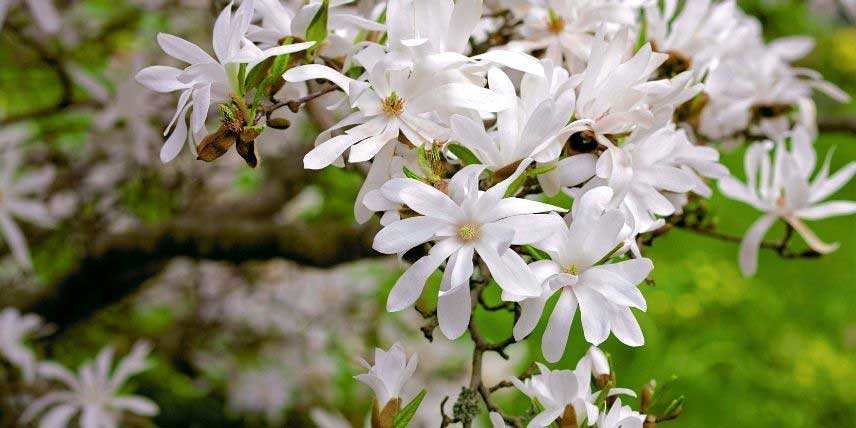
White star-shaped flowers of Magnolia stellata
→ Also discover our comprehensive fact sheet on Magnolias and our Magnolia buying guide
Ornamental apple trees
Ornamental apple (Malus) often bears white, pink or red flowers, usually around April. They are followed by decorative fruits, which can also be used in jellies. When planted in an orchard, ornamental apples will favour pollination of other fruit trees that flower at the same time. Foliage takes on beautiful autumn colours. We recommend ornamental apple ‘Evereste’. It offers beautiful flowering as pink buds that then open into pure white flowers gathered in clusters. Its ornamental qualities have earned it the Award of Garden Merit from the Royal Horticultural Society.
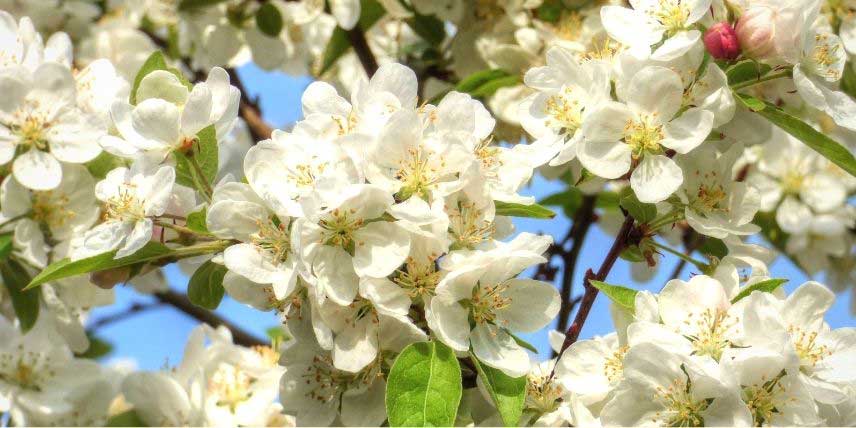
White flowering of Malus ‘Evereste’ (Mark AC Photos)
→ Also discover our full guide to Ornamental apple trees
Cytisus praecox
Early broom, or Cytisus praecox, is a bush, bushy and ramified, that produces very abundant flowering in March and April. Small in size, it usually does not exceed 1.20 m in height. Branches are flexible and bear small, deciduous leaves that are few in number. It most often flowers in yellow, but there are also varieties with white, red or pink flowers. It produces a true profusion of flowers! They are irregular, papilionaceous, like sweet pea or salvia flowers, and are scented. They are then followed by black pods. Cytisus praecox prefers full sun and free-draining, rather poor and acidic soils. It is a robust, undemanding plant that grows quickly but whose lifespan is quite short (up to 4 or 5 years). It is preferable to carry out severe pruning after flowering, in order to keep a compact, well ramified habit.
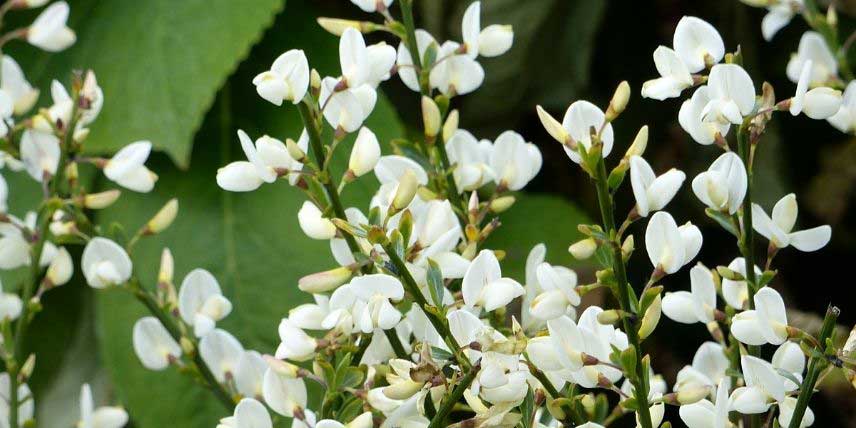
Early broom Cytisus praecox ‘Albus’ offers a beautiful and generous white flowering!
→ Also discover our complete fact sheet on the Cytisus
Corylopsis
Corylopsis is a bush native to Asia (Japan, China, Korea…) and produces soft yellow flowers from late winter, which appear on the naked shoots. Gathered in small pendulous clusters, they resemble little lanterns and have a very delicate appearance! It is nicknamed Japanese hazel or winter hazel because of its plicate foliage reminiscent of hazel. Leaves turn yellow in autumn before falling. Corylopsis is a small bush: generally it does not exceed 2 m in height. Its shoots are thin, often angled and somewhat twisted. Ideal to plant in partial shade or dappled sun, in light, free-draining soil, without lime.
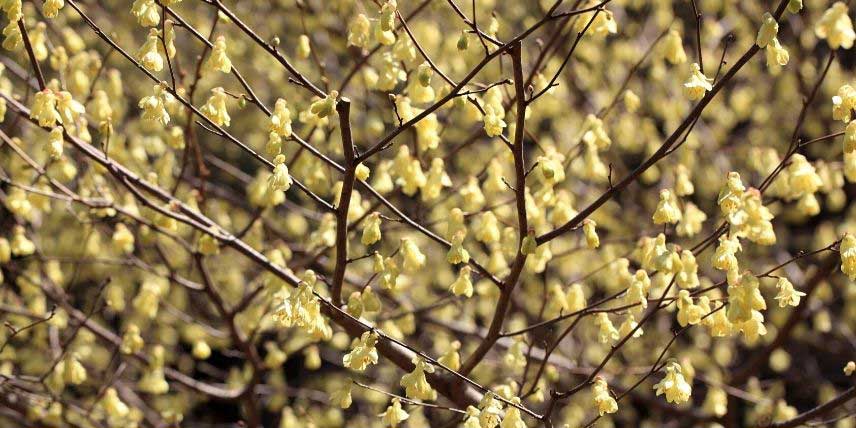
Corylopsis pauciflora bears numerous small yellow flowers, which appear on its naked shoots (photo Tanaka Juuyoh)
→ Also see our full fact sheet on the Corylopsis
Ceanothus impressus 'Puget Blue'
Ceanothus ‘Puget Blue’ flowers in March–April, producing a multitude of blue flowers in panicles. Flower buds are initially pink‑red, then flowers open and turn blue. They are small and clustered in panicles. They have the advantage of being slightly scented and melliferous, attracting pollinating insects that come to forage. This ceanothus forms a rounded, compact, dense bush, and at ripeness it reaches up to 2 m in height. Leaves are small, dark green and glossy. They are evergreen, remaining decorative even in winter. This bush prefers warmth and full sun! In the garden, it will thrive in well‑draining soil, even poor and calcareous, sheltered from cold winds. It is an ideal bush for a seaside garden! Regarding its hardiness, it tolerates down to -10 °C.
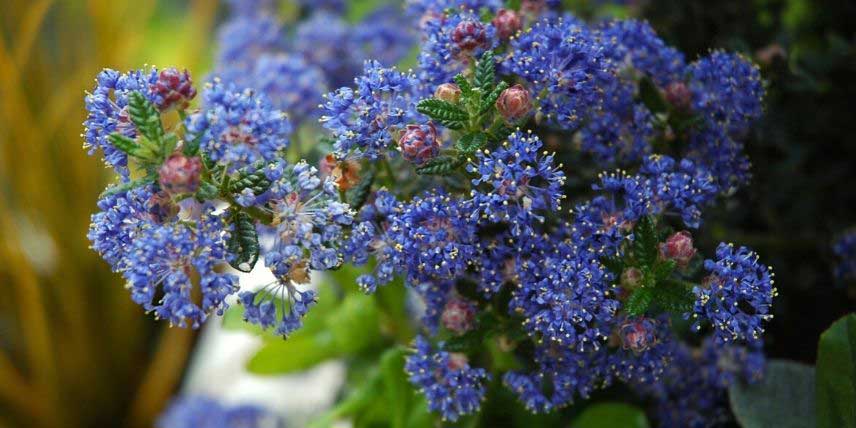
Blue flowering of Ceanothus impressus ‘Puget Blue’ (photo Calips)
→ Also discover our full factsheet on the Ceanothus
Flowering currant
Flowering currant, or Ribes sanguineum, is a bush that produces in March–April pendulous clusters about 8 cm long, made up of pink, fragrant flowers. These are followed by bluish-black fruits favoured by birds. The flowering currant also bears attractive light-green dentate leaves, measuring between 5 and 10 cm long and divided into three to five lobes. They are deciduous. Its flowers and foliage release a blackcurrant scent! It is a bush that grows quickly and takes on a rounded habit, reaching at ripeness between 2 and 3 metres in height. It prefers ordinary, rather fertile and cool soil, in sun or semi-shade.
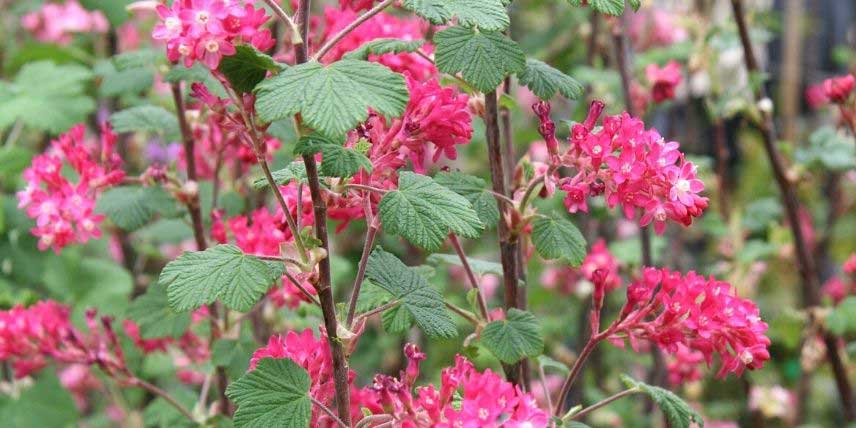
Flowering currant Ribes sanguineum ‘King Edward VII’ offers a lovely pink flowering
→ Also discover our full fact sheet on the flowering currant
- Subscribe!
- Contents
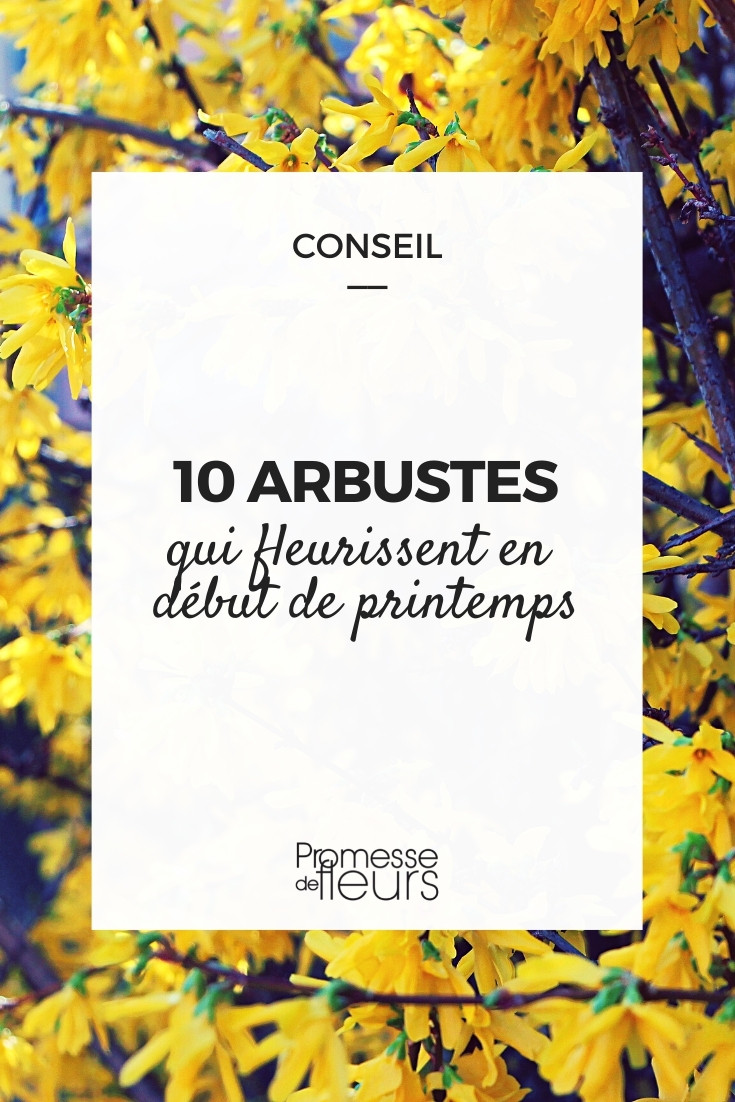

































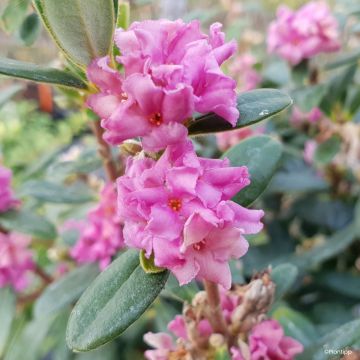
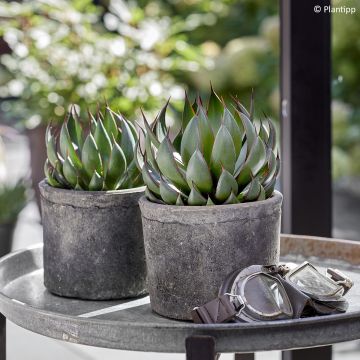
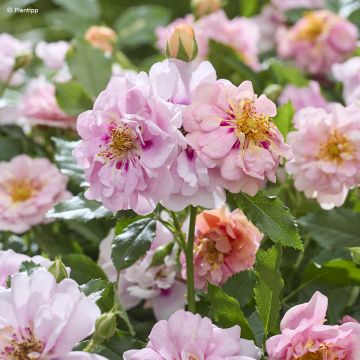
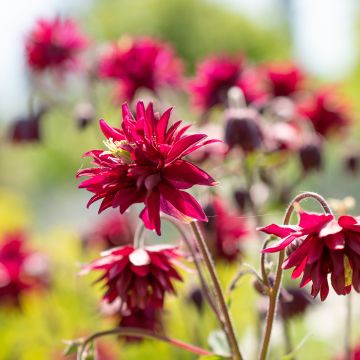
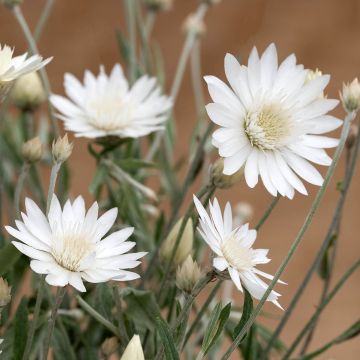
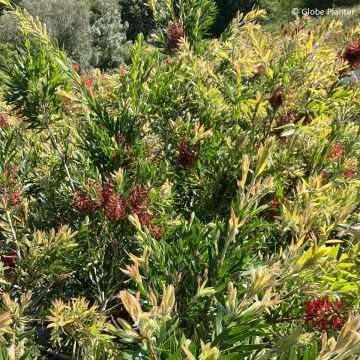
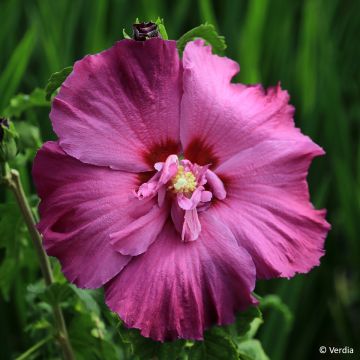
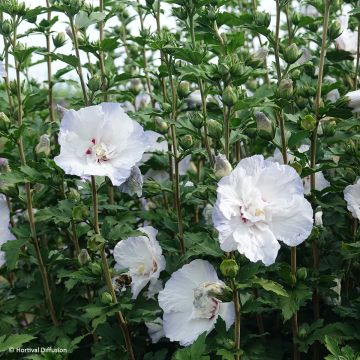
Comments